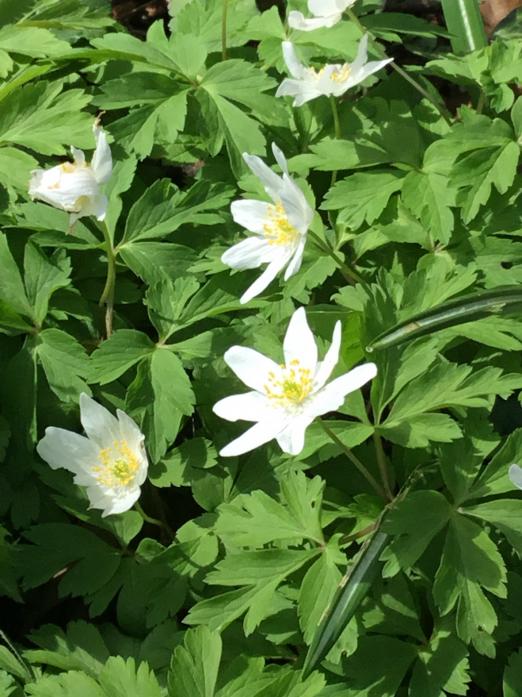
Wood anemone Anemone nemorosa
WOOD anemone flowers in March, when a six inch leafy stem emerges from a thin, woody underground rhizome.
The leaves are tri-lobed, and bear a single white flower which is sometimes tinged pink or even blue. A second crop of leaves arises directly from the rhizome after flowering. There are six to nine tepals (sepals pretending to be petals) which are white, although sometimes, again, tinged with pink or blue.
There are 50 or so bright yellow stamens, and the seeds are downy, with a beak which serves to aid dispersal by hooking on to passing animals.
The flowers, which open in sunshine, are visited for the pollen by the first bees and flies to emerge in spring. There is no nectar. The leaves and rhizome form an important part of the diet for bank voles.
Anemones are flowers that belong in ancient woodland, and when you come across them on river banks or in hedgerows, this is a clear indication that the area was once forested.
They are also extremely slow growing, and Richard Mabey, in Flora Britannica, quotes a growth rate in spread of only six feet every hundred years.
The Roman naturalist Pliny is probably the one who coined the name “windflower”, as he maintained that the plants only opened in the wind; and indeed the name anemone is derived from the Greek for wind (Anemos).
However this may be a misnomer. It's also possible that the name is derived from the old Semitic, Naaman, referring to Adonis, whose blood was shed by a boar and from it sprang the red anemone, Anemone coronaria.
Present day Arabs still celebrate the red anemone, calling it the wounds of the Naaman. Culpeper had uses for extracts of wood anemone. He claimed that bathing in a decoction of the leaves cured leprosy, and chewing the root “brings away watery and phlegmatic humours and is therefore excellent for lethargy”. Also, an ointment of extract of wood anemone was deemed good for cleansing malignant and corroding ulcers.
So. A pretty plant, thought to help with some pretty ugly conditions!
Dr Richard Warren is a botanist from Barnard Castle





